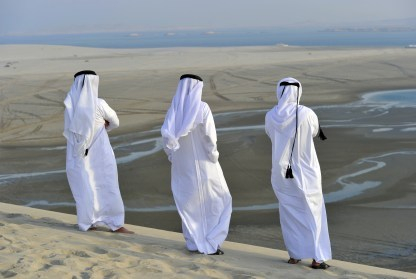
There’s more to Qatar than just the capital. In fact, the country has a rich ecology and a number of natural attractions. Here are some must-visits.
Al Khor
This pleasant coastal town and former pearling and fishing village is a 40-minute drive from Doha, and popular with residents, especially during the cooler months. It has plenty of picnic spots including at the beach and park. Near the waterfront is a small museum and a port that’s home to a number of old fishing boats. Make a pit stop at the popular fish market near the harbour and take some pictures at the old watchtowers before you leave.
Khor Al Adaid
Known as the Inland Sea, Khor Al Adaid is a three-hour drive from Doha. This stunning area with a shallow tidal lake, which has a narrow outlet to the sea that borders Qatar and Saudi Arabia, is surrounded by crescent-shaped dunes. Because of the strong currents, swimming in the lake is not recommended, and only experienced drivers who know how to manoeuvre a four-wheel drive should attempt the journey.
Bir Zekreet
The Ras Abrouq natural reserve — also known as Bir Zekreet — is a popular camping spot, especially over weekends. Located at the tip of a peninsula north-east of Dukhan, the track passes the wild deer reserve set up by the Ministry of Environment. At Bir Zekreet you’ll be able to spot the picturesque natural formations known as desert mushrooms. Just remember, navigating it also requires a four-wheel drive.
Al Jassasiya
This spot is arguably one of the most fascinating in Qatar. Located north-east of Doha, Al Jassasiya features ancient stone carvings, known as petroglyphs, which vary from geometric patterns to representations of animals and sand dunes. These carvings are not immediately obvious, but with more than 900 carvings scattered around 580 sites, you should be able to discover a few.
Singing Sand Dunes
Located 40 kilometres south-west of Doha, the Singing Sand Dunes are so named because of the noise the area makessound that can be heard here. The sand in this area has the right abrasive qualities, as well as the necessary wind and moisture conditions, to create a low natural hum. While these sounds occur naturally, they can also be triggered by sliding down the face of the dune or running along its crest. The spot is especially worth the visit during sunset and for a sandboarding session.








